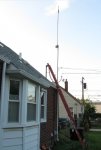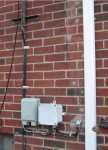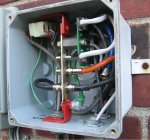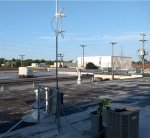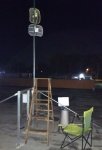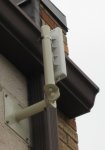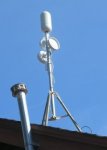What is the proper way to comply with the code when installing a PoE wireless Internet antenna on a home? Typically, the antennas are a mixture of plastic and metal and the manufacturers instructions do not always cover proper grounding or surge protection. I was told at one point a UL surge device placed inside the home at the point of entry, properly grounded to the electrical system, was sufficient. Does anyone have any guidance?
A typical installation includes mounting a bracket to the roof or gable to support the antenna, a shielded Cat6 with shielded ends is ran from the antenna down the wall, then enters the home through a hole drilled in the wall. Once inside, the 3-prong power supply (-48v) is attached to the shielded Cat6 with a shielded end. a UL listed surge device is attached to a grounded outlet and put inline between the power supply and the customers equipment.
A typical installation includes mounting a bracket to the roof or gable to support the antenna, a shielded Cat6 with shielded ends is ran from the antenna down the wall, then enters the home through a hole drilled in the wall. Once inside, the 3-prong power supply (-48v) is attached to the shielded Cat6 with a shielded end. a UL listed surge device is attached to a grounded outlet and put inline between the power supply and the customers equipment.


